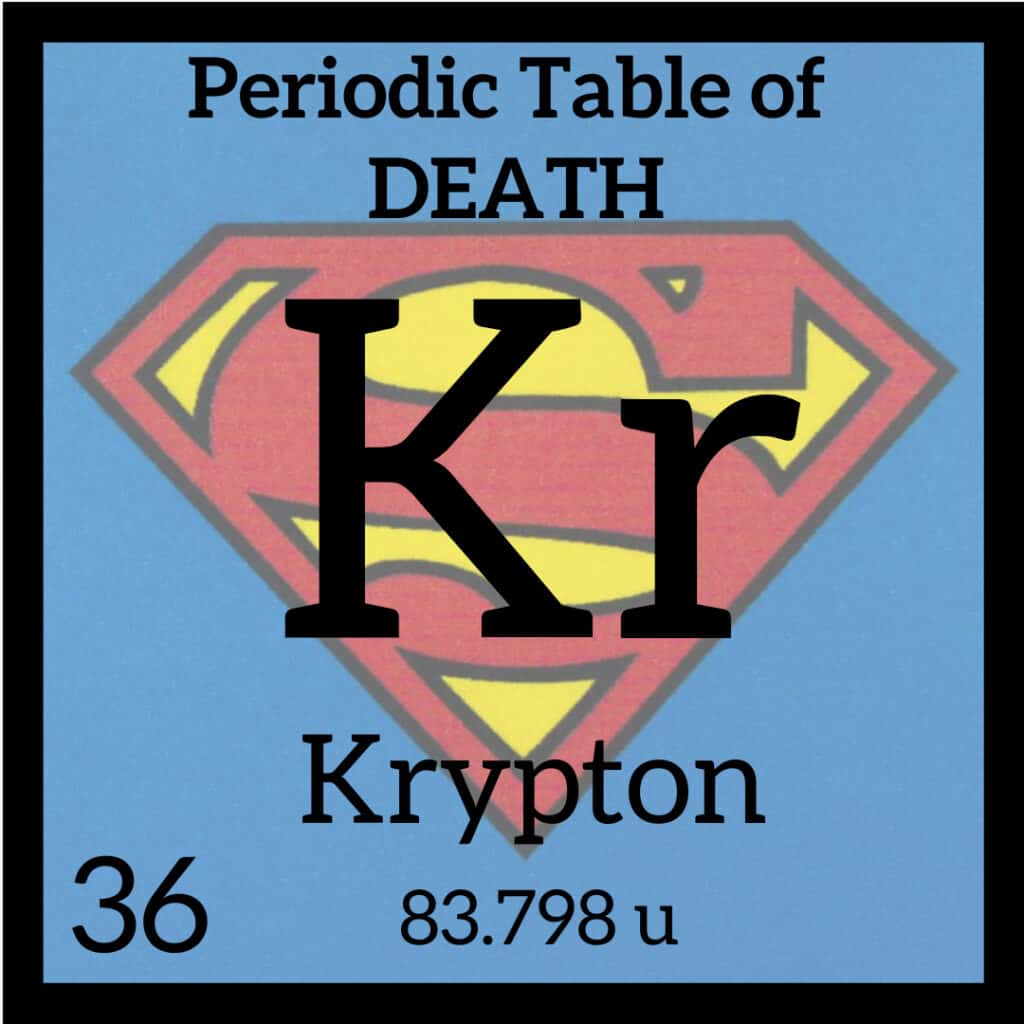
Krypton (Kr) is colorless, odorless, tasteless (Hey. Like iocaine powder) except it is chemically inert, which means it really doesn’t react with anything (1). It is essentially harmless.
Or is it?

All the noble gases can asphyxiate if you visit a small unventilated space that is full of Kr and not full of enough oxygen or have friends in low places because Kr is five times heavier than air. The only upside is that Kr has a whole-body narcotic effect, so death is relatively painless. There is a radioactive version, Kr-85, that is highly toxic (2) and can cause all kinds of cancer and disease. It can also be used to detect secret nuclear weapons research because it’s a byproduct of uranium and plutonium fission (3, 4).

But when Kr is formed into a green crystalline structure called Kryptonite (there are many
different color types, although the most common is green (7)), it can kill. Not all people are susceptible, though. Kryptonite appears to be highly toxic to a small group of refugees living among us, hiding in plain sight by using mild manners, street clothes, a dab of Brylcreem, and wearing eyeglasses that cause prosopagnosia or face blindness, a very real neurological disorder (6, 10).
So how does Kryptonite work? It turns out these refugees have cells that can use the light from earth’s sun in a solar panel-like manner for energy (5) instead of using lemon poppyseed muffins and double-shot lattes. It’s technically too complicated to explain in this short write-up, so here’s the simple version. These refugees’ cells act like living solar batteries that absorb electromagnetic radiation from the sun: a photonucleic effect, not photosynthetic like plants (8). Gamma radiation emitted from Kryptonite interferes with the electromagnetic absorption and energy accumulation. If this interference continues for any length of time, severe disability and, potentially, death can occur.

Scanning the scientific literature, I could find no published articles that compared photonucleic cells to those of plant or animal cells, so this is possibly a fertile field of future funded research. If I had to hypothesize, I’d say that there must be a third energy-converting endosymbiotic organelle in these photonucleic cells comparable to mitochondria and chloroplasts (9). But that’s just speculation on my part.
What I do know is that a high proportion of the population wears glasses, street clothes, and uses hair gel. Even I do. Hmm…


 Nitrogen and the Periodic Table of DEATH
Nitrogen and the Periodic Table of DEATH
Leave a Reply